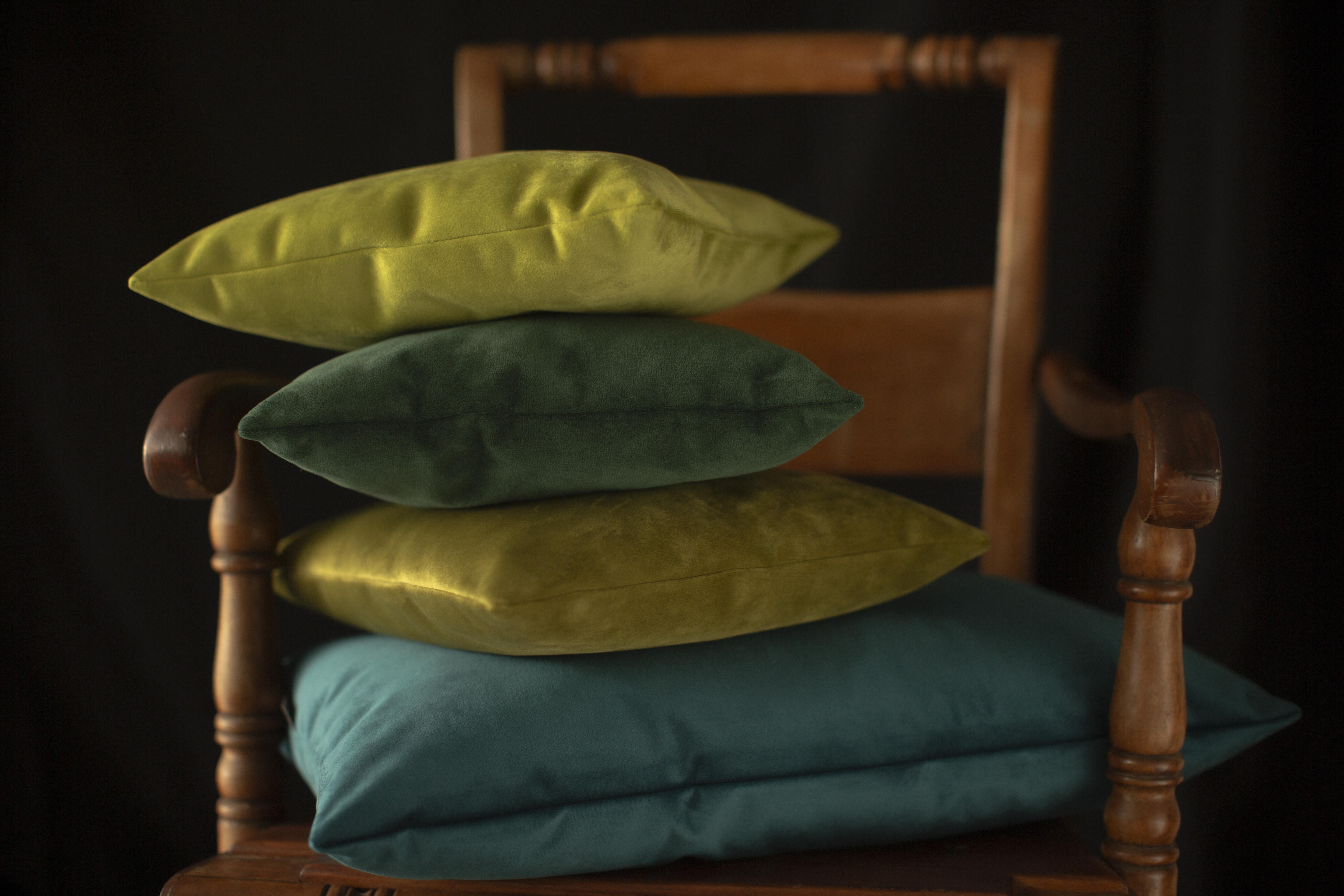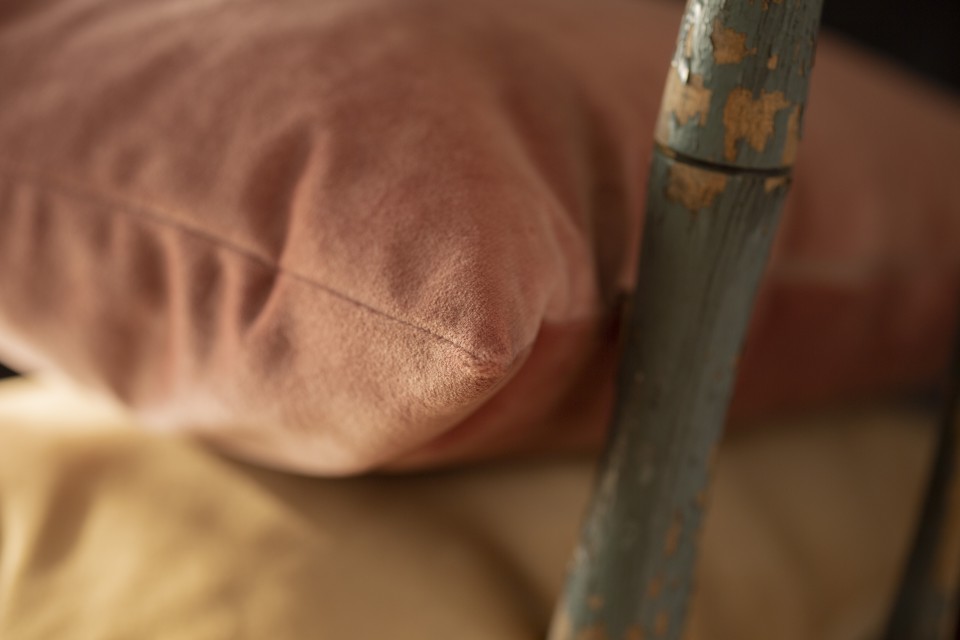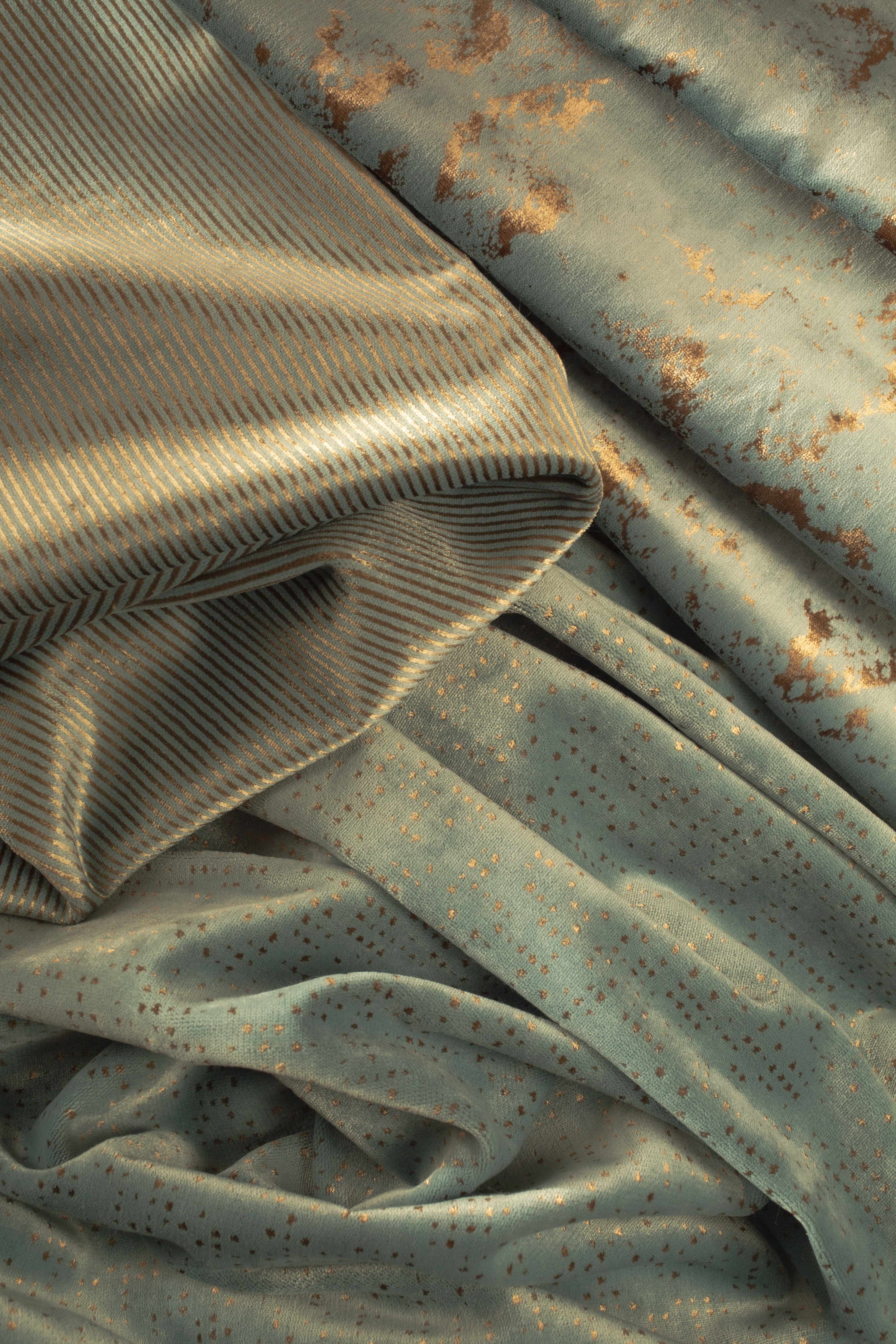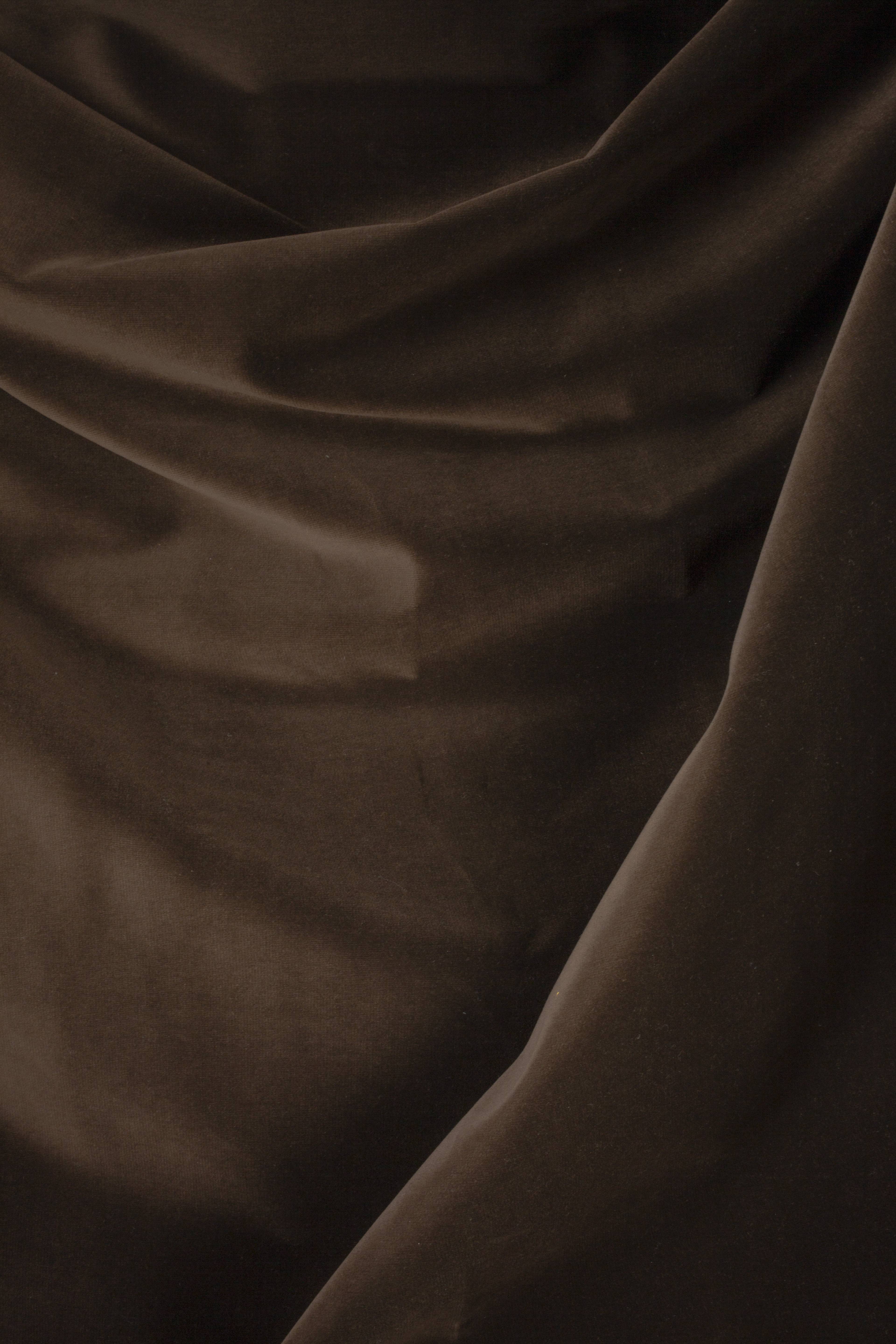People Who Like the Feel of Velvet Stuffed Animals
People Who Like the Feel of Velvet Stuffed Animals
Velvet, velveteen, velour, plush – are they one and the aforementioned fabric? Nearly the complexity of terminology.

Velvet, besides called velour, plush or velveteen, is a material associated with elegance and luxury. Being soft and extremely pleasant to the touch on, velvet endows the interior with an elegant manner and lends it a pinch of extravagance. Used in small accessories or piece of furniture - velvet e'er brings a an air of completely new quality.


These majestic fabrics have a rich history. Velvet is the technique of weaving a textile, non the fibre itself. Invented most likely in Republic of india, it was initially used to make formalism outfits for rulers, aristocrats and clergy. Since the Centre Ages, it has as well been used to produce curtains and furniture upholstery. To this twenty-four hour period, it still serves equally a luxurious decorative and upholstery material. It is as suitable for draperies, curtains or pillows, as well equally for chaise longues or chairs.
Thick and dense, it consists of 2 layers: a cotton base and a slightly shiny fleece with soft and fragile pile, extremely pleasant to the touch.

Due to the characteristic style of weaving, the fabric - illuminated from unlike angles - reflects the light and thus delights with the gloss accentuating its arrangement.

Loops fabricated of cut or uncut threads are woven between the interlaced base of operations threads, i.e. weft and warp. As a result, instead of two threads as in other fabrics, velvet has four boosted threads forming the pile. And so, the origin of the Polish word "aksamit" (velvet) is not surprising, as it derives from the aboriginal Greek word "hexamitos", meaning literally "consisting of six threads".
Several types of this fabric can exist distinguished according to the threads used to create the velvet pile. Traditionally, natural velvets are produced and used, i.e. those made from cotton wool, silk or wool fibres.

RENARD Woodbine and Night Olive
Nowadays, synthetic fibres are as well used to produce velvet, resulting in more than elastic fabrics, such equally polyester velvet, often enriched with spandex.
Patterns in velvet are obtained primarily through patterned weaving (jacquard), contrasting the height of the pile, combining pile-covered surfaces with loops, too every bit burdensome, panning, embossing patterns using rollers, and screen-printing. Brocade, made by adding metallic threads to the cloth, is also a type of patterned velvet. There are also numerous velvet varieties characterized past a specific type of ornament.

Velvet, very elegant and soft to the touch, tin be very different in quality. The most expensive and desirable blazon has very densely arranged, short threads (the shorter the amend) of perfectly equal length. The texture of the cloth may also differ owing to manufacturing techniques. In the uncut velvet, boosted threads in the form of loops remain uncut. In cut velvet the pile use cut loops.
In the advertisements of accessories or furniture, names such as velvet, velour, costly and velveteen are often used interchangeably. Although in the common sense they are indeed the same affair, in specialist terminology each of these terms refers to a slightly unlike blazon of material. The mutual denominator of all these fabrics is their brusk, fluffy outer pile and a feature production method. They all belong to the category of fabrics cut in the warp, yet it is good to sympathise these technical complexities and minor differences.

Modern Classics collection
Plush (from French PELUCHE) is a general category of pile fabrics, which includes velvets. It is a soft cloth, which is characterized by a much higher pile (in velvet information technology does not exceed iii mm), formed from an additional warp. There are several techniques for obtaining it. To produce plush (upholstery) fabrics, the pile is formed by simultaneously creating two fabrics, tied with an additional pile warp. The double material is created on a special plush loom, with a special knife running across, cut the double warp and separating the ii layers. The split up warp forms a pile, on the upper fabric from below, on the lower – from above. After cutting, both fabrics are wound on split textile rollers.
All plush fabrics including velvet, velour and velveteen, regardless of the technique, are cutting in the finishing process in order to even out the pile.

Velour is a kind of sparse velvet with very brusque and usually silk pile. Its nap is made of warp threads.
Velveteen, for a change, is a kind of shiny plush, whose nap is fabricated of cutting long interlaces of an additional pile weft. Hence velveteen is the merchandise name of weft costly. Velveteen has a like appearance, properties and use to those of velour or velvet, but has a slightly higher pile than the latter.
Since the characteristic feature of velvety fabrics is the "fluff" created by dumbo "hairs", a visual shading effect may appear on their surface during apply. This happens when the pile fibres are arranged in different directions and is called "pressure marks". Nosotros can also say that velour "crushes". You tin hands deal with it by brushing the material on the furniture with your hand or a soft castor.
Soft and free-flowing, non very thick velvets tin can stretch a bit due to their texture. For this reason, they are more than suitable for slightly harder furniture, richly decorated with quilting and stitching.
The product of regal life and complex product. The history of velvet.

There are several theories about where velvet was invented. Although the fabric is strongly associated with the European nobility, it is most often believed to have come from the Eastern culture, and its popularity in Europe is the result of our fascination with the Far East.
The about common belief is that velvet came to Europe via the Silk Road from India, even though the first records nearly it come from Egypt and date dorsum to 2000 BC. Yet another source velvet is the Middle East with the most talented velvet weavers in Turkey, Greece and Cyprus.
Manifestly, however, the oldest pieces of velvet were found in Prc, dating back to the period of several one-time dynasties, including Qin (around 221-206 BC) and Western Han (206 BC-23 Advertisement). These fabrics were woven from silk which in Chinese is referred to as quirongjin or rongquanjin.
In Europe, velvets introduced by Arab merchants accept been used since the twelfth century. Europeans, who fell in dear with soft velvet, imported information technology using the Silk Road, the aboriginal network of trade routes that continued East and S-East Asia with East Africa, Due west Asia and Southern Europe.

Modernistic Classics collection
Italy was the first European country to create its own velvet manufacture, which made many Italian cities famous.
The main centres of European velvet production were initially Genoa and Venice, equally well as Amalfi, Lucca and Florence. Each of these bang-up centres of textile production created their ain types of decorations based mainly on Farsi patterns and most often resembling the design of Persian carpets. The Venetian type was particularly valued, with a very high pile and a convex pattern on a cut background. The pattern was obtained by applying templates to the fabric and cut the threads that passed through the template openings. The Venetian technique of contrasting the cut background and the convex, fluffy design later spread to France, where the first velvet factory was opened in Lyon in 1536. Information technology then became 1 of Europe's main weaving centres.
In 1278, velvet made its debut at the court of Medieval England. Rumour has it that Henry VIII, delighted with this luxurious material, had his private toilet covered in velvet.

JUDITH Hematite and NICOLE Hematite
Naturally, the backdrop of warp and weft threads affect the qualities of the fabric thus produced. The density affects the elasticity and permeability of the fabric. Thickness, i.e. a parameter which depends on the thickness of yarn and its blazon, has a major impact on the fabric's intended use. Irresolute 1 or more than parameters dramatically modifies fabric properties such as thickness, surface density, elasticity, permeability, etc. Therefore, for specific purpose fabrics, individual parameters should be paw-picked.

In Poland, velvet production began in the 17th century, although in that location is evidence that it was known in this country already in the 14th century. According to the treasury records of the court of Rex Władysław 2 Jagiełło (Jogaila) from 1393: "... 32 grzywnas (Polish measure of weight), which amounted to about 16 pounds of silver were paid for a piece of velvet, from which the caftan for Thousand Duke Vytautas was cut". According to the same source, "compared to other fabrics, the community duty on velvet was equal to the duty on samite and college than on damask and satin".
In Poland, similar to all of Europe, velour fabrics were initially used to industry liturgical vestments and men'south elegant secular garments, dresses, costumes, hats, footwear etc.
The production of various types of velvet entailed numerous applications of the fabrics e.thousand. as adornments of animals, weapons and armour. They were used to make haberdashery accessories, luxurious items such as chess mats or volume covers, sword scabbards, gunpowder boxes etc.

Modern Classics collection

Across the world, velvet was used for various religious purposes: to robe loftier-ranking people in the church building, to make liturgical vestments, as a background for religious performances, and covers of religious books.
At that place is plenty of prove in history that velvet was used very early on for upholstery - from tents or foldable floors to wall drapes.
In the Middle Ages, velvets started to be used equally upholstery fabrics, likewise as decorative fabrics for defunction, cushions, and bedspreads.
In the era of the industrial revolution, difficult, time-consuming and expensive production of velvet was mechanized, making it easier and faster. This previously luxurious fabric, once reserved only for the elite, became cheaper, more accessible and popular.
In the past few years, thank you to the involvement in the design of the 1960s and 1970s, velvet has once more been widely used in the interior design manufacture. Currently, the velour trend is and so popular that upholstered furniture and accessories made from the material were hailed equally 1 of the main interior design trends of 2022.

Fabrics used in the session:
Charleston is a knitted velour material suitable both for decoration and upholstery, highly resistant to abrasion (90 000 Martindale cycles). It is available in a wide range of colours: from greys, in line with the latest trends, to violets, reds and azures. Together with the Charles velour, it is presented in the Charleston sampler, making a spectacular range of 85 colours. The textile is pleasant to the touch and constitutes a universal base for utilise in interior pattern.
York is a refined, viscose velour for decorative utilise. Despite its good technical parameters, information technology requires special care, so we do not recommend using information technology for furniture. Requires lining. It matches the Teigra collection. If you decide to utilize the fabric for upholstering, delight find maintenance tips under "York". It is the perfect product for elegant archetype or glamour-way interiors.
Renard is a modern version of classic cotton wool velvet, fabricated more durable by its Teflon® coating. This soft, versatile upholstery fabric is available in a broad range of 56 beautiful, deep colours. Its refined matte surface will bring out the shapes of traditional and modern furniture. It is particularly recommended for luxurious private interiors. Dry make clean only.
Fabric with extreme abrasion resistance of i.v million Martindale cycles. The top layer is made of 100% natural mohair. Natural flame retardance and antistatic stop make the product ideal for apply in public places.
Modernistic Classics is a collection of unique classic patterns, whose splendour has been revived with the employ of modern technologies. The designers used sophisticated colour palettes, "paintbrush" effects, digital prints and flock motifs, crackle surfaces and elegant coat, which endowed the fabrics with an incredibly rich and impressive grapheme. Modernistic Classics is a perfect solution for enthusists of elegant, historical and modern-manner household and public interiors.
The photograph-session was commissioned past DEKOMA in New York.
Creative idea and styling: MBBM Studio.
Photos: Boris Miller.
More blog entries
Dekoma'southward partners offer 2186 products including: 1009 material products, 400 wallpapers and 707 natural leathers.
People Who Like the Feel of Velvet Stuffed Animals
Source: https://dekoma.eu/en/blog/miekki-jak-aksamit-przytulny-jak-pluszowy-mis



Comments
Post a Comment